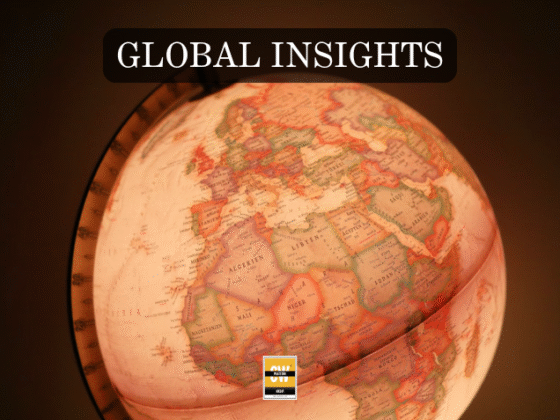Every time someone types a prompt into an artificial intelligence, somewhere out of sight a machine quietly drinks. Not water from a glass but gallons coursing through cooling towers, siphoned from rivers and reservoirs to keep vast racks of servers from overheating. Each interaction is not weightless text appearing on a screen but the echo of turbines spinning faster, grids straining harder, aquifers dropping lower. The illusion of a free conversation hides a material truth: thought, when simulated at industrial scale, consumes like a factory.
The mythology of artificial intelligence has always suggested that it lives in the ether. We talk about “the cloud” as if it were vapor, as if conversations with machines occur in a frictionless space where code answers code. But the cloud is grounded. It is steel beams, concrete slabs, high-tension lines, and fans roaring in hangar-sized data centers. It is copper wires and lithium batteries, gas-fired peaker plants and hydroelectric turbines. It is contracts that secure enough electricity to power a small city, all for the sake of training one model. Intelligence, when industrialized, is not immaterial. It is anchored in infrastructure, and infrastructure is always hungry.
Training a modern large language model requires the synchronized labor of tens of thousands of GPUs, each devouring electricity. The arithmetic happens invisibly but its footprints are traceable: power plants burning longer, rivers warming as cooling water is discharged, local communities watching reservoirs sink. Once trained, the model demands more. Each query, every sentence it generates, is dozens of times more energy-intensive than a simple web search. Multiply that by billions of prompts a day and you see not just innovation but appetite — a new digital metabolism layered onto an already strained planet.
What is striking is how unevenly this metabolism operates. The benefits of AI flow globally, but the costs are borne locally. A request in Berlin can drain a liter of water in Iowa. A conversation in Seoul can push a power station in Ireland closer to blackout. A corporate experiment in San Francisco can mean higher emissions in the Gulf Coast. The geography of AI is extractive, mapping onto old patterns of globalization: profits and prestige concentrated in a few centers, environmental strain scattered across peripheries. The new commodity is cognition, but the political economy feels familiar.
The ethical debates around AI often orbit bias, misinformation, surveillance, and alignment. These are urgent concerns. Yet there is another alignment problem — ecological alignment. How do we reconcile the exponential appetite of raw compute with the boundaries of climate, water, and biodiversity? It is not enough to worry whether a chatbot is “aligned” with human values in its outputs; we must ask whether the systems themselves align with planetary limits in their inputs.
The story of compute has always been a story of escalation. Transistors doubled, chips shrank, processing power soared. AI follows this trajectory with greater velocity. Models balloon from billions of parameters to trillions. Training runs that once cost thousands now cost millions. The next generation may cost billions, not just in dollars but in kilowatt-hours and cubic meters of water. Escalation is treated as progress, but it is also inflation: intelligence inflated at the price of resources. We are minting cognition the way an earlier era minted coins — by melting something tangible.
The imbalance is sharp. The world celebrates the advent of AI-driven economies that may produce the first individual trillionaires, while the environmental debt of this wealth is spread thinly but painfully across those with the least buffer. Farmers in water-stressed regions compete with cooling towers for the same rivers. Communities near data centers see land repurposed for industrial footprints, biodiversity clipped, noise and heat normalized. Entire national grids must be expanded to host facilities whose benefits accrue elsewhere. It is a quiet transfer of costs from the many to the few, dressed up as inevitability.
There is also a philosophical shift hidden in plain sight. Intelligence was once a human monopoly, rooted in minds and communities. To outsource it into machines is to industrialize thinking itself. But once industrialized, thinking becomes subject to the same logics as steel or cement: economies of scale, competitive escalation, environmental externalities. We are, in effect, raising a new species of factory — one that does not produce cars or chemicals but words, images, decisions. Factories of cognition. And like every factory, they leave waste.
The ethical question is therefore not whether machines can think, but what it means for us to treat thought as an extractive process. If every question to an AI costs a sip of water, a spark of electricity, a gram of carbon, then thinking is no longer immaterial. It is ecological. And once we accept that, the stakes sharpen: what kinds of thought are worth the drain? Is a casual image filter worth a thousand liters? Is an endless loop of chatbot banter worth the energy of a village? We are being asked, implicitly, to ration cognition.
This rationing is invisible in the rhetoric of abundance. Tech firms promise infinite scaling, models that will be larger, faster, more “aligned.” But alignment without ecology is hollow. A polite machine that answers without bias but quietly accelerates drought is still unethical. An accurate system that aids business while heating the climate further is still maladaptive. The moral economy of AI cannot be separated from its material economy.
As the climate crisis intensifies, we need better forecasting, modeling, and coordination — tools that AI can indeed provide. AI can help optimize energy grids, predict extreme weather, accelerate materials science for renewables. Yet the very compute that powers these solutions is itself a contributor to the crisis. We build machines to save us from the storm while the machines themselves burn fuel and drink water that deepen the storm. This is not irony; it is feedback.
The future of AI is often framed as a contest between civilizations, a race for supremacy. But perhaps the real contest is between AI and its own environment. Will thinking machines learn to consume within limits, or will their appetite destabilize the very world they are built to inhabit? In one scenario, we invent leaner algorithms, more efficient chips, renewable-powered data centers cooled by innovation rather than rivers. In another, we chase ever-larger models, indifferent to their footprints, until the grid or the climate imposes rationing of its own. One path is sustainability; the other is exhaustion.
Both paths are unfolding. Research into smaller, more efficient models grows alongside the megaprojects of trillion-parameter systems. Some companies invest in renewable energy contracts and recycled water cooling; others strike quiet deals to draw from aquifers. The ethics of these choices are rarely debated in public. There is no global council on the ecological cost of compute. No standards exist for water-per-query. Carbon-per-prompt is not on product labels. Users treat AI as weightless even while it drips with matter.
The rise of thinking machines is not just a technological event but an ecological and moral one. For the first time, we are treating intelligence as something to be mined, refined, and scaled like ore. And like every resource rush, it comes with blind spots and hubris. We tell ourselves the machines are intelligent, but perhaps the more important question is whether we are. Are we intelligent enough to govern their growth, to measure their costs honestly, to embed limits before collapse embeds them for us? Or will we let cognition inflate until it punctures the very systems that sustain it?
The metaphor of a chat and a chug captures the paradox cleanly. To speak to a machine is to consume the planet. To converse endlessly is to bleed silently from aquifers and grids. Each answer carries the taste of minerals, the heat of turbines, the ghost of carbon. Intelligence is no longer free because nothing is. The machines may be our mirrors, but what they reflect is a species willing to mortgage rivers and skies for the luxury of instant answers.
If the last industrial revolution was powered by coal, this one is powered by questions. We are asking more than we realize, and the bill is already arriving. Whether we pay it in innovation that reduces the thirst of thinking machines, or in scarcity that forces rationing, is the decision that will shape not just AI’s future but our own.






